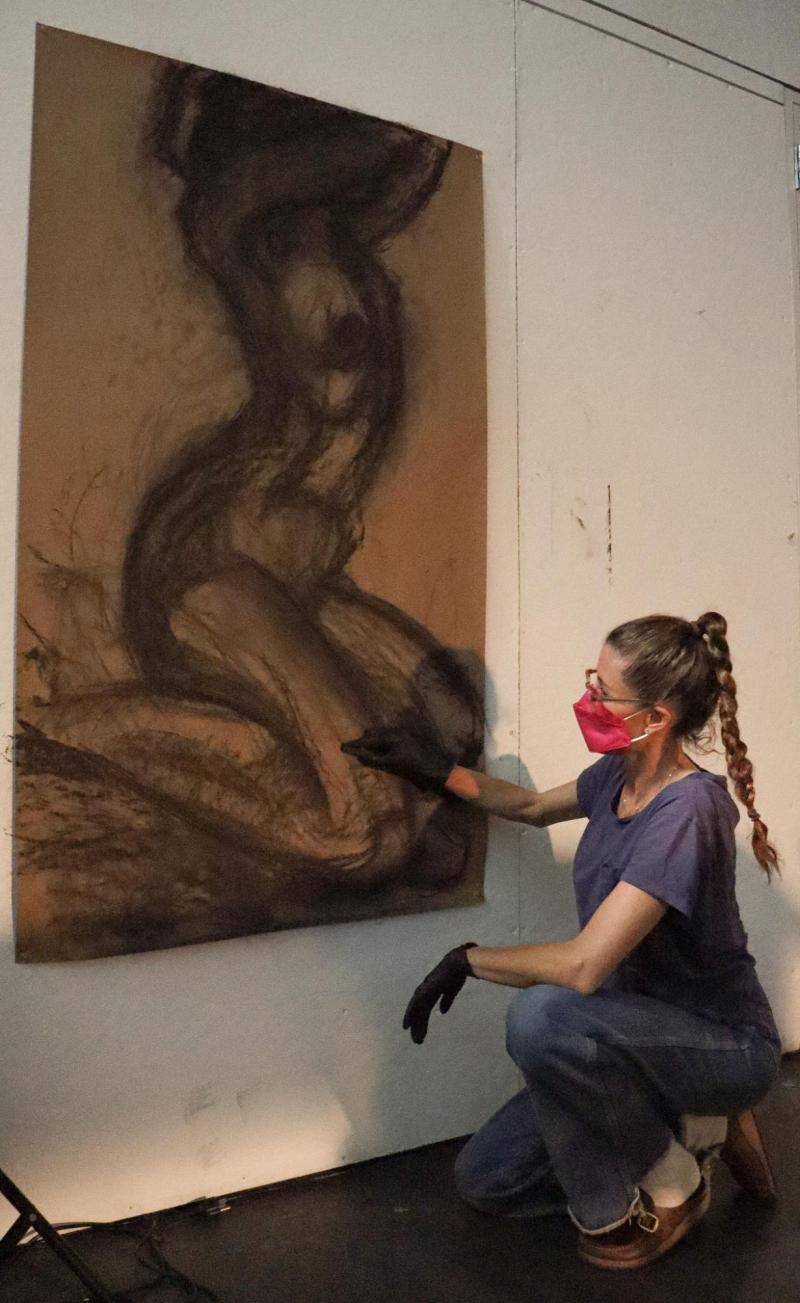When people ask me which class I learned the most from my Freshman year at Stanford, my answer always surprises them. It wasn’t calculus or Program of Writing and Rhetoric (PWR), and it definitely wasn’t organic chemistry. Hands down, the class I learned the most from was Drawing 1.
Coming to Stanford, my dream was to take a studio art class. Art captivated me since I was a kid, but formal art classes were never offered at my small hometown’s high school. Therefore, I was crushed when I learned that all art classes were overenrolled for Fall quarter.
Since I couldn’t take a traditional art class at Stanford, I immediately immersed myself in creative extracurriculars. I started as a Photography staffer at The Daily — despite my limited technical knowledge — and eventually applied for a photography Introductory Seminar (IntroSem) in winter quarter, where I received a formal technical education with DSLR cameras.
One day, I was working on a photo essay project for my photography class in one of the drawing studios at the McMurtry Art Building, a room where a friend had told me I could find good lighting. It was there that I met Josephine Taylor-Tobin, one of the Drawing 1 instructors at Stanford. I needed an extra set of hands to hold some of the props for a staged shot, and she kindly offered to help after her class finished. She encouraged me to apply for her class again
That spring, when results were released, I finally made the cut!
Josephine embodied both the physical and spiritual essence of what I always envisioned an artist would and should be. Her voice was kind and strong, and she spoke with careful concision and clarity, especially when providing artistic feedback. She dressed in fabrics with vibrant colors, held her hair back in a mesmerizing braid that swished back and forth as she drew and wore long, dangly earrings that tinkled musically as she spoke.
In her class, where we worked with charcoal and graphite mediums, I learned the right way to hold a drawing pencil was lightly at the tip, not with a typical handwriting grip. I learned that I created my best drawings when I just went for it and worked fast, without overthinking. I learned that even if I couldn’t see it within the moments of drawing, my art really was improving with every class. That was something to be proud of.
Aside from gaining insight into the technical aspects of art practice, I gleaned extensive real-life applications that have been especially relevant to me as a Stanford student. In an interview, Josephine shared with me that she first gained notoriety as an artist primarily for a collection of life-sized works centered around “themes of emotional, sexual, physical and verbal abuse, as well as tense family dynamics,” some of which were unfortunate realities that she faced during childhood. To cope in college, her therapist recommended that she start a sketchbook to get the images and flashbacks that haunted her on paper.
“I had always resisted the idea of art as therapy before, because I considered it as a trope devaluing and pigeonholing art as something merely therapeutic,” she revealed to me. “But it was incredible. Drawing these memories was like an exorcism; by making the memories physical and tangible and separate from me, they lost their power.”
By sharing her struggles, Josephine taught me not to devalue my own vulnerabilities. Stanford had always been my dream school, but I quickly learned that there was a lot more to its glittering facade that I had romanticized for so long. Alongside the beautiful friendships and memorable experiences I made in my first year, I also juggled intense emotions that I had never experienced before: heartbreak, anxiety and hopelessness. I used to feel embarrassed for having these insecurities, thinking that I was too negative or that something was wrong with me. Now, I’ve realized that all of these emotions were normal to experience as a young adult alone in the world for the first time, and I’m proud of myself for acknowledging them instead of suppressing them. These emotions helped me recognize my true friends that would support me in both my highs and lows and, in turn, helped me cultivate empathy, kindness and depth within my life.
Along similar lines, Josephine taught me a critical tenant of both art practice and life: “placating the viewer can be a very slippery slope.” In high school, I was always guided by the naive goal to get into a school like Stanford. But after getting in, finding a new sense of purpose was challenging. I frequently felt “FOMO” and always second-guessed whether I was truly making the right decision with this or that. I always doubted if I was making the most of the Stanford experience — but on whose terms?
Josephine revealed to me that it is often that artists experience an “ephemera or detritus from the process of creating art by getting hung up on the outcome that viewers might purchase.” I could heavily relate to that as I compared myself to my peers, agonized about what medical schools might critique about me, obsessed over my grades and largely forgot to enjoy what I was learning. For months, I forgot to acknowledge to myself that I was trying my best and that was what really mattered.
Just as art is a communion with “the color being used, the lines being streaked and shaped,” my degree at Stanford should symbolize a communion not with achievements or bragging rights, but with the education I receive — and that is something I must craft on my own. As Josephine so eloquently summarized at the end of our discussion: “To all young artists out there: please remember to make your art remain true to your own vision — always.”
